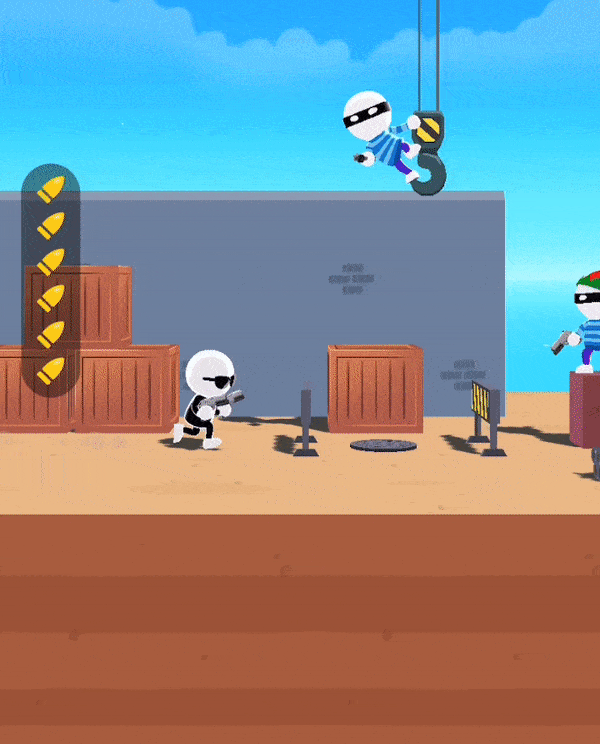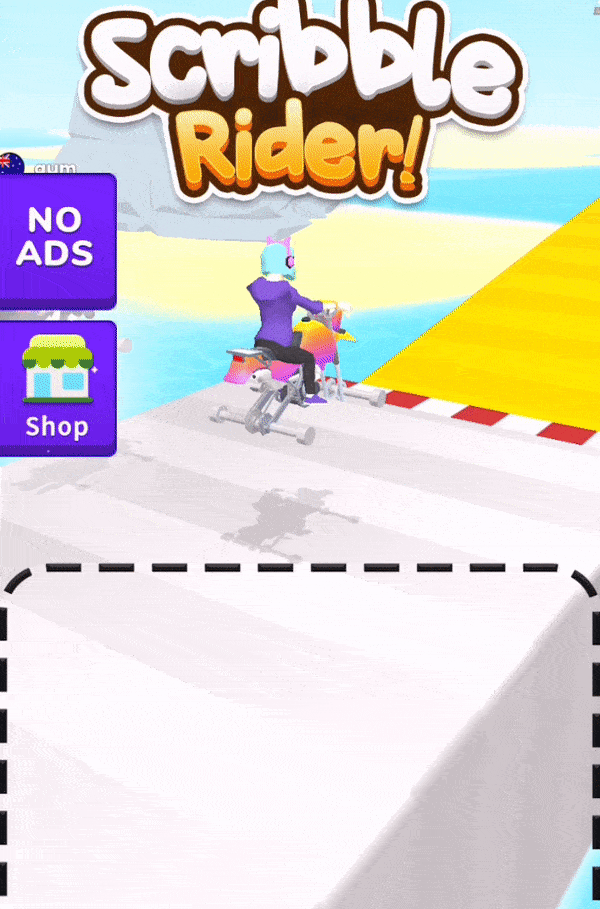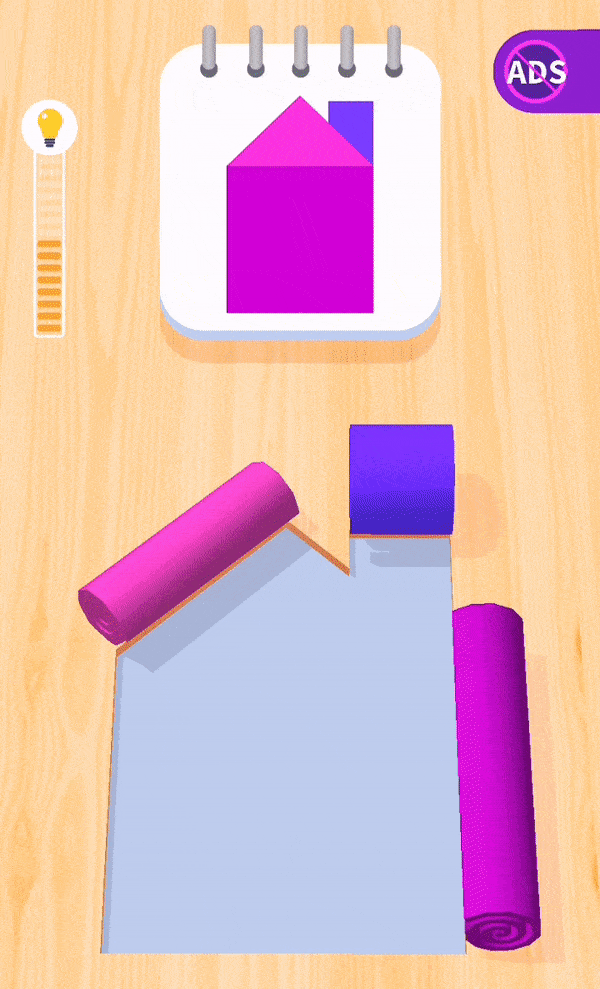· 9 min read
Best Casual Games of Lockdown 2020 – Part One

Sarah Impey
Content Creator at GameAnalytics
This year, we’ve seen more narrative and story entering the hyper-casual genre, a deluge of social hidden-role games, and a resurgence in the classics. The headlines are rammed with examples of games exploding onto the scene and dominating our collective attention.
But there have been a few quieter successes, too. Games that have been gathering players and doing particularly well at keeping idle thumbs busy. Over the course of this three-part series, we’ll look at these less-talked-about games and what we can learn from them.
How has lockdown affected gaming?
Before we launch into the games themselves, it’s worth mentioning why we’re focusing on casual games. Our CEO, Ioana, explained in a talk recently that it’s been a strange year for the industry. (Though, not particularly surprising.) At the start of the lockdown, playtime shot up 62% and players spent 5-30% more. In particular, hyper-casual games did exceptionally well. Simple games for difficult times, it seems.
Using our tool, Benchmarks+, we can see that the games in the top 5% saw pretty much every metric improve. Specifically, it seems players are loading up their games more often and spending more time on them. With around eight sessions a day, each nearly half an hour long. And players are sticking around longer, too. Day 28 retention was about 8%.
So it seems that hyper-casual games are scratching an itch for many. But what exactly are they doing? Well, let’s look at a few examples.
Johnny Trigger (Say Games)
- Short: 5/5
- Simple: 4/5
- Satisfying: 5/5

This hyper-casual title puts you in control of a stick figure spy reminiscent of John Wick, slow-motion spinning through levels and shooting baddies in the head. It’s actually a 2D timing game. You have no control over Johnny Trigger. But, as he sommasaults his way through the levels, you time when to fire his shots. Miss, and the baddies shoot you back.
In true hyper-casual manner, each level is extremely short, with regular checkpoints. The core gameplay is extremely simple: tap the screen at just the right moment. It’s so intuitive, players can jump straight in. And what’s more satisfying than becoming the perfect action hero?
Find inspiration, then simplify
Satisfying gameplay comes in a few forms. In Johnny Trigger, it’s a combination of smooth animation, a voice-over “headshot” whenever you fire the perfect bullet and a simple mechanic, done well.
The best casual games take a single idea and focus on it. Look around at popular games and ask: What’s the most satisfying mechanic? Can I take everything else away and focus just on that?
In the case of Johnny Trigger, it’s clearly inspired by bullet time – a mechanic you’ll find in games like The Matrix, Max Payne or even Red Dead Redemption. They’ve then stripped away everything else and focused solely on perfecting that feeling and moment.
Cycle your rewards
Repetition is boring. It really can ruin a perfectly good game, and damage your retention. So, to keep players engaged, Say Games cycles their rewards, for example:
- practical rewards (like a new gun)
- cosmetic rewards (like a skin)
- new mechanics (you realize Johnny can ricochet off metal objects or blow up barrels)
- a meta-feature (you can enter “secret levels” after hitting certain goals)
- in-game currency.
By cycling the rewards, Say Games keeps the game feeling fresh and exciting. Even though the gameplay itself is largely the same, you eagerly tap to start the next level to see what you’ll get this time. And lo-and-behold, it’s another surprise.
Scribble Rider (Voodoo)
- Simple: 5/5
- Short: 5/5
- Satisfying: 4/5

In Scribble Rider, you race another player across a whacky landscape. The twist? You need to draw your own wheels. You don’t actually control your speed, and the course is completely straight. But how you draw your wheels will affect how you perform.
You can also change your wheels at any moment. So as the terrain changes from flat grass to bouncy lake, you can draw a new shape to keep ahead of your opponent. It’s a very simple and easy motion that comes quite naturally.
Use other players for content
Pitting you against other people is a clever idea here. It makes it much more challenging and real, which keeps the game fresh for longer. It gives you a reason to keep playing, even if that’s just to see if you’ll bump into the same player again. And winning is always satisfying.
It’s worth noting that you’re not playing against other people in real-time. It’s either a recording of another player’s attempt at the level or a bot labeled as if it’s human.
Voodoo has proved time and time again that people don’t really notice if they’re playing bots or real people. It’s a useful tactic, especially if you need to fill out a lobby when your game is new. It can lower wait times, simulate the feeling without changing the gameplay and let people play offline. Just make sure you don’t market your game as multiplayer if people aren’t actually playing with each other.
However Voodoo does it here, it’s clever. We’re naturally social creatures and simply adding a flag and a name means we get invested. It’s much more immediate than a leaderboard, which they could’ve added instead.
Take advantage of the three stages of learning
There are no instructions to Scribble Rider. You’re presented with a box and a car without any wheels. Naturally, you’ll draw a circle and start scooting along. But you soon learn that it won’t be enough to beat every opponent. Each terrain needs a different set of wheels.
This is clever. Voodoo doesn’t tell you what wheels you need for each terrain, which encourages you to go through three stages:
- Exploration. You start off trying out any old wheels, bumping into obstacles and eventually learning the principles of the game. This in itself is quite fun and satisfying. You’re solving the puzzle. Learning the rules.
- Experimentation. Now that you know you need different wheels, you try out different shapes more purposefully. You’ll try a square for water, a straight line, a scoopy thing. Which works better?
- Mastery. At this point, you know which wheels work best. So now is when you properly pit yourself against your opponents, trying to time your wheel changes exactly. Now, you become competitive.
You might cycle through these stages a few times, as new challenges crop up. But over time, you’ll end up mastering each challenge. Sadly, a lot of games try to hand-hold players through the first two stages. They don’t leave room for exploration and experimentation. So consider giving players that freedom. It’ll give your game much longer legs and keep players invested for longer.
Color Roll 3D (Good Job Games)
- Simple: 5/5
- Short: 5/5
- Satisfying: 3/5

In Color Roll 3D, you’re given a bunch of rolled-up colors, which look a lot like carpets. You then need to unroll them in the right order to match the picture.
An extremely simple premise that tickles that oddly satisfying urge we all have. Seeing the colors roll out in the right order, layering on top of one another, is a nice feeling. But it’s worth noting that it doesn’t quite live up to our other examples in terms of satisfaction. It doesn’t include enough meta-features to truly keep players around.
Vary the difficulty
Repetition is boring. (Do you see what we did there?) But it’s true. And Color Roll gets around this by making sure that the difficulty feels random. Most games start easy and slowly ramp up the difficulty. Color Roll switches it up level to level.
No level is particularly challenging. And there’s no fail state. But in a hyper-casual game, you shouldn’t need an onboarding process. Color Roll isn’t truly random, though. The average difficulty looks like it increases as you go along, varying between two points, each slowly rising level by level. But each individual level might be anywhere along those two points.
This stops the player ever doing one that’s actually too challenging for them, but keeps it feeling unexpected.
Add hints to puzzles
Hyper-casual games, unlike other genres, shouldn’t ever leave your player stuck. Color Roll automatically shows you moves if you click the hint button, so that you can learn and continue.
Good Job Games made the right decision here. They didn’t hide it behind an ad-wall or any in-game currency. The player can use as many hints as they like and as often as they want. This might feel counterintuitive, but it’s about the difference between punishment and reward.
It’s fine to hide features – rewards – behind a real-world cost. Players are willing to pay for pleasure. But a hint feels like a punishment. So if you put this behind another cost, it’ll just discourage them from playing all together. Better to leave it open.
Keeping it simple is the key to success
There’s been a wide variety of hyper-casual games this year. Puzzle games. Drawing games. Shooting games. Social games. But the trend seems to be simplicity. People are looking for distraction during difficult times, not another challenge to add to their headaches.
But don’t be afraid to challenge your players, otherwise, your game will quickly become dull. It’s about finding that balance and giving them a sense of surprise. So keep them on their toes and vary the difficulty and rewards.
In the meantime, check out part two and three of our series.